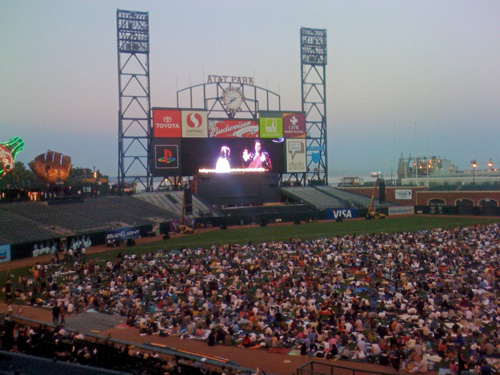I recently saw San Francisco Opera’s production of Erich Korngold’s Die Tote Stadt. The title means ‘The Dead City’ and refers to the city of Bruges. Ostensibly the story is of a man who is obsessed with his dead wife to the point that it threatens his sanity. The production was excellent and is highly recommended.
The protagonist, Paul, moves to Bruges– but basically moves outside of time and space. Because of his loss, he employs his force of will to suspend the passage of time. He reverses time and keeps it idling in the moments of his idyll. Time stops and he constructs and altar to the past. But an altar and icons are not sufficient for a living relationship. A double must be produced to stand in for the lost one, to bring the past into the present.
Die Tote Stadt is often linked to Alfred Hitchcock’s film Vertigo. In Hitch’s story a secret love is lost and recreated piece by piece. Time is suspended so that the hero, Scottie, can return to the path not taken and experience the love he repressed. He thinks he is a puppetmaster, but in this story of multiple levels, he’s also a puppet being controlled the the simple mechanism of his fear of heights.
One story, Die Tote Stadt, ends with the hero walking away from the dead city and returning to sanity and life. The other ends with the hero killing the object of his obsession through a misunderstanding of the story he occupies. Because Scottie has suspended the passage of time, to live in a story outside of time, he doesn’t perceive the story going on around him.
There are other examples of the construction of a double to fill an emptiness. In My Fair Lady, Henry Higgins constructs a lady suitable to be his companion. The construction of the double starts with an older man finding a younger woman with a physical resemblance. The young woman’s life and identity must be erased in favor of the object of his obsession. His story must replace hers, an event that can never truly happen.
It’s a powerful pattern often played out in both fiction and real life. Presidential candidate John McCain is deeply enmeshed in this drama. He has suspended time, retreated to the past, looks forward to a nostalgic future and has attempted to construct a double to stand by his side in a story unfolding outside of time. What McCain doesn’t seem to understand is that while he plays out his nostalgic dream, he is a character in a drama unfolding in real time. In a post-modern twist, Henry Higgins learns to speak Cockney slang so he can become the suitable consort of Eliza Doolittle. While his story will end soon, he has enabled her future. Whatever Lola wants, Lola gets…
2 Comments
